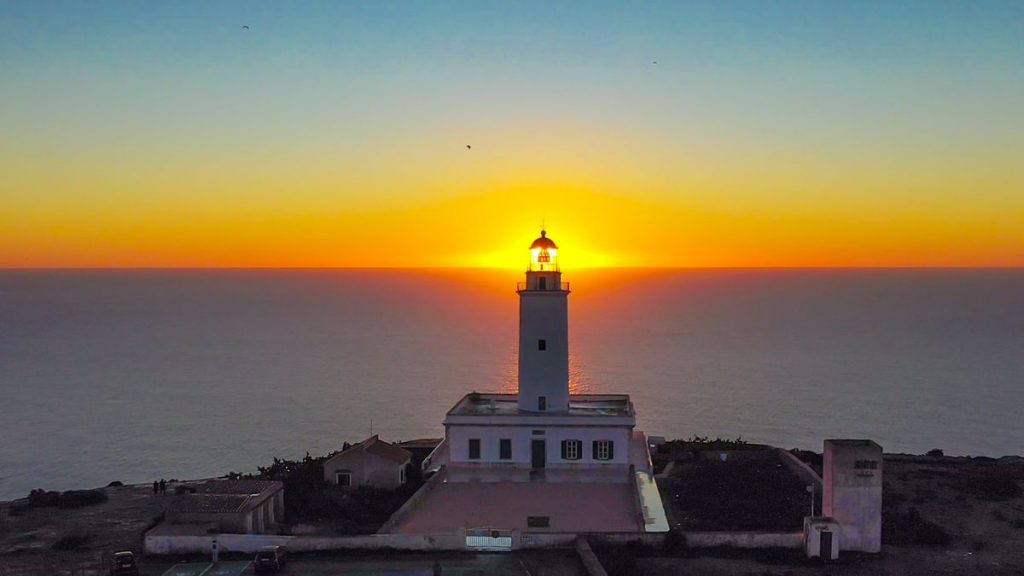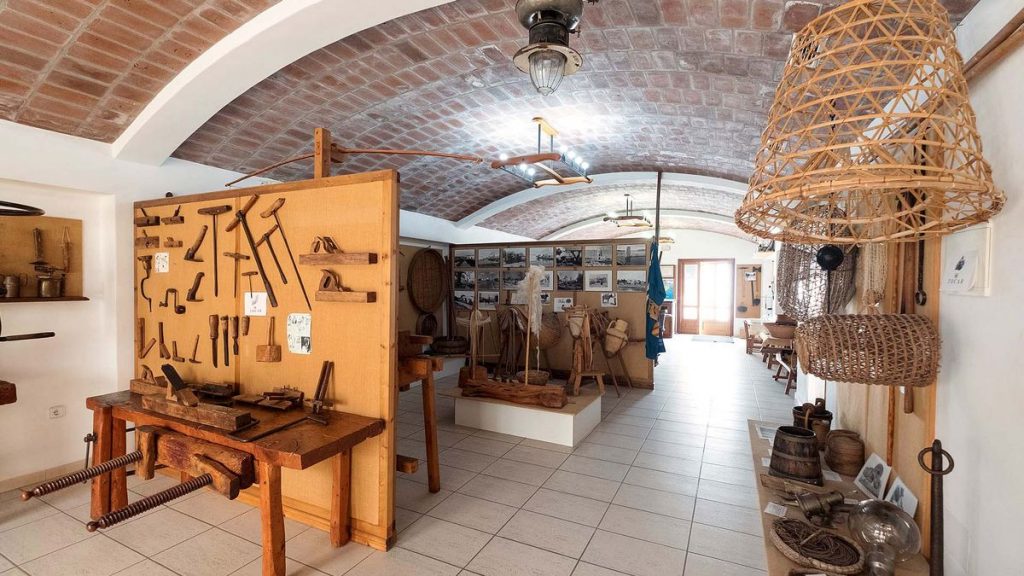Formentera is the smallest of the Balearic Islands but also one of the most beautiful and known worldwide for its crystal clear waters and slow’ way of life.
Only reachable by sea, ferries sail the short, 30 minute journey continuously from neighbouring Ibiza. Cars, motorbikes or bicycles can be taken on the ferries, though you can also rent vehicles in Formentera with many car hire companies in the port which is called La Savina.
Two days are enough to get to know the most emblematic spots on the island, although you can also extend your stay to get the most out of it and discover the more unknown corners of Formentera.
WHAT TO SEE IN TWO DAYS IN FORMENTERA
La Mola Lighthouse
This lighthouse is located on the highest point of the island, right on the edge of a cliff over 100 metres high. Thanks to the views it offers, it has become one of the most visited spots on Formentera, and also one of the most photographed by tourists.
It sits 120 metres above the water, skimming the cliff, and its lamp rises to 142 metres. It began shining from on high on 30 November 1861, after an investment of more than 275,000 reales. It was built according to a project by Emili Pou, a Mallorcan engineer who also designed the port of Ibiza and many other lights along the Balearic coast.
Today, it is possible to enter the lighthouse as the facilities have been converted into a cultural centre.
Location of La Mola Lighthouse here.

Ses Salines Natural Park
The Park is located between the two Pityusic islands of Ibiza and Formentera, stretching from the southern area of Ibiza to the north of Formentera, as well as the sea in between.
The park covers 2,838.44 hectares of land and more than 13,000 hectares of sea, which is equivalent to 75% of the territory of the protected area.
The Natural Park is an example of the richness of Mediterranean biodiversity. Its uniqueness lies in the fact that it is a resting and nesting area for migrating birds. As a natural area of special interest, it encompasses a combination of terrestrial and marine habitats, with major international ecological, scenic, historical and cultural significance.
Swimming in its crystal-clear waters is highly recommended along with strolling through its lagoons. Remember to respect the environment: do not drop litter and follow the advice indicated on the signs.

Megalithic tomb of Ca na Costa
This archaeological site is one of the most spectacular in the Balearic Islands together with similar burial structures. Moreover, its location makes it one of the most visited tourist attractions, as it is found between the Estany Pudent lagoon and the village of Es Pujols, two more places not to be missed when visiting Formentera.
The megalithic tomb of Ca na Costa has a low-ceilinged passage only enterable by crawling and which, at just over 2 metres long, leads to a central circular enclosure with a limestone floor of almost 4 metres in diameter. This interior space is marked by seven huge, uncarved stone blocks about 2 metres in diameter and between 30 and 40 cm thick, set vertically into the stone base of the floor. In light of the two stone concentric and retaining platforms surrounding the monument, joined by 24 other large vertical slabs that hold up a symmetrical and radial layout like buttresses, it is reasonable to believe that such a powerful structure could only have been intended to support the weight of the enormous stone that would cover the enclosure. The complexity of its structure is what is most surprising about its unmistakable ‘signs’ of symbolic, cultural and religious nature.
Location of the site here.

San Francisco Javier or Sant Francesc
This is one of the most interesting little villages on Formentera and is full of shops, bars and restaurants which are perfect to stop for a break or do some shopping. The church of San Francisco Javier can also be visited and is found in the central square.
The church’s austere appearance is due to the fact that the building was designed as a defensive fortress as well as a church at a time when the memory of piracy was still very vivid. Its iron-plated door is particularly noteworthy. The church was completed in 1738 and is located opposite the Consell Insular (Island Council).
The mills of Sa Mirada and Sa Miranda can be found near Sant Francesc Javier.
Location of San Francisco here.
Formentera Museum of Ethnography
Opened in 1993 as a private museum, in 2000, with the facilities facing closure, an agreement was signed between the various government institutions of the islands (Govern Balear, Consell Insular and City Council of Formentera) with the intention of keeping the exhibition space open until the future Formentera Museum became a reality. The Formentera Museum of Ethnography, located in the centre of the town of Sant Francesc Xavier, permanently exhibits a display of the traditional tools and utensils used by the inhabitants of this small Balearic island. A visit here provides a glimpse of life on Formentera before the arrival of tourism.
Location of the museum here.

Lose yourself!
Being a small island of 83 square kilometres, losing oneself is the ideal activity on Formentera. Enjoy its rural paths, bathe in the crystal-clear waters of its beaches and coves, stroll through its small villages and disconnect from the demands of everyday life.
Whether travelling by car, motorbike or bicycle, Formentera is captivating and even if you get to know it well, you will always want to come back.

